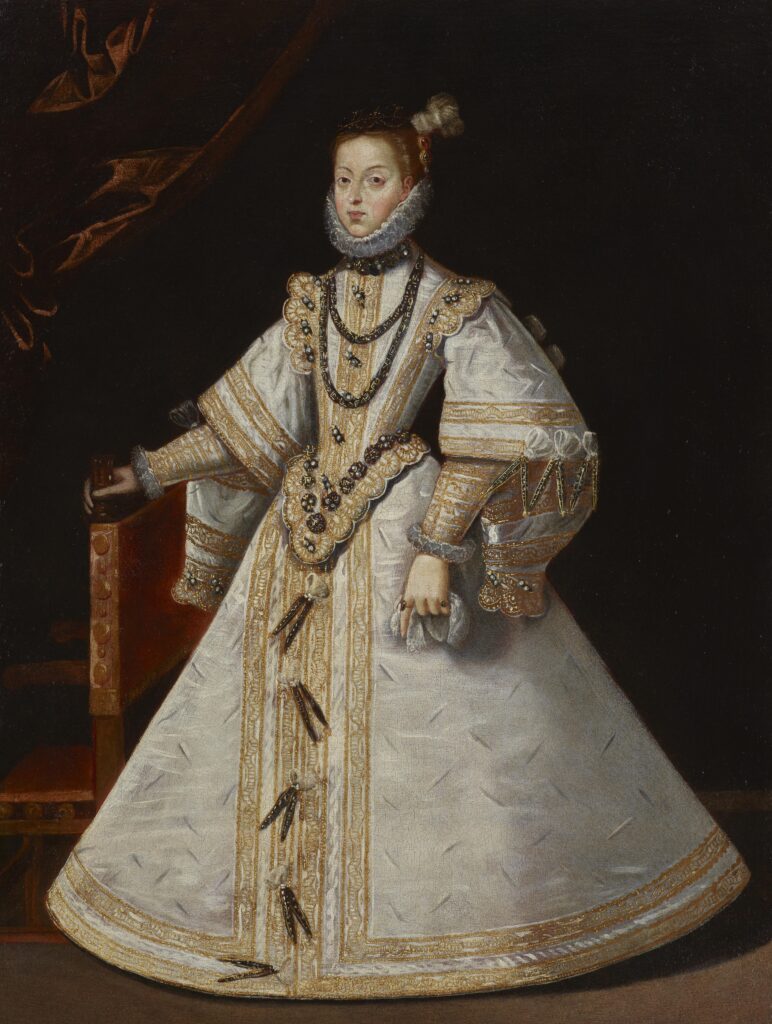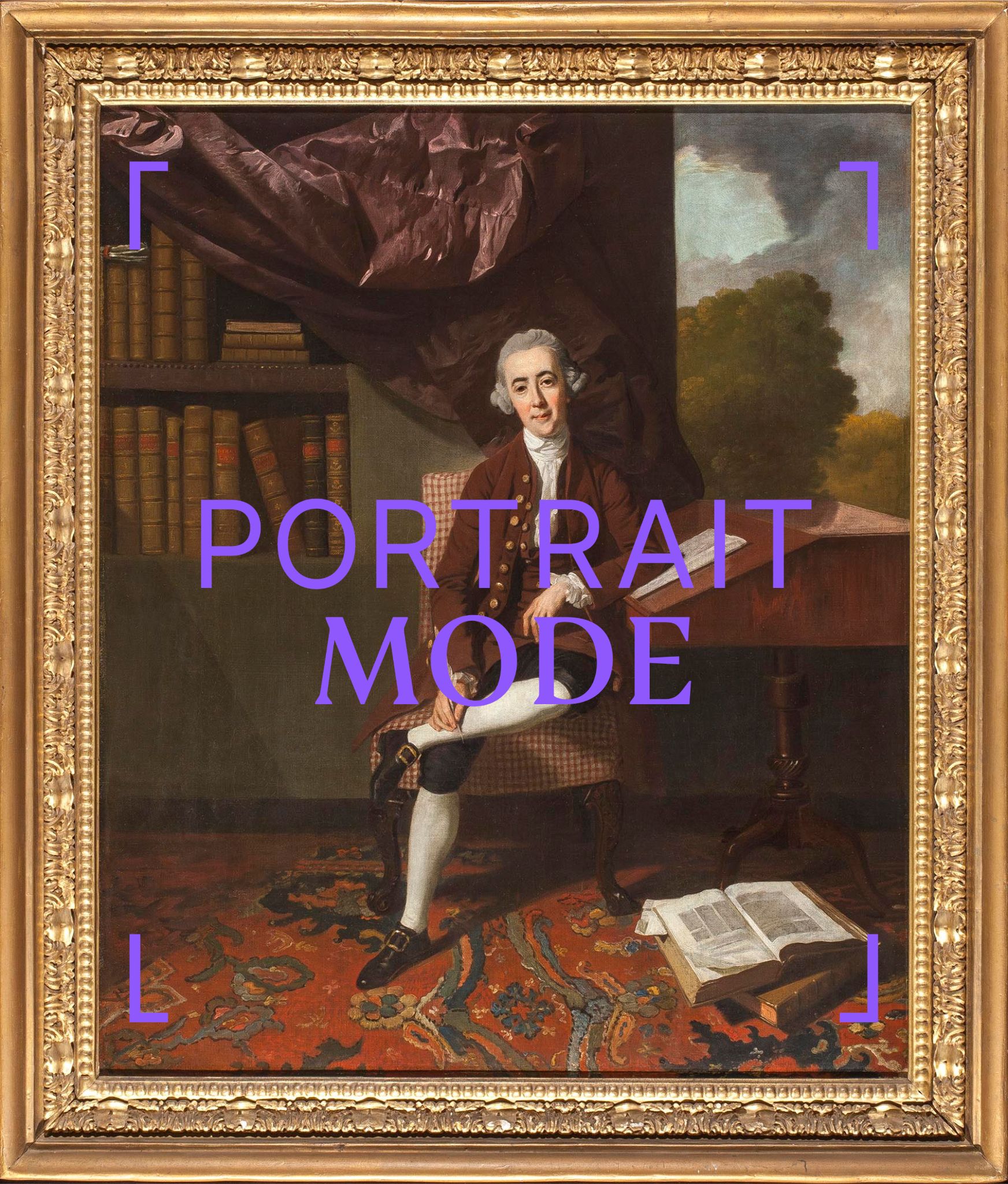Workshop of Alonso Sanchez Coello
1531 - 1590
A Portrait of a Lady, probably Anne of Austria, standing, full Length, wearing an elegant Court Dress, a white Ruff and a plumed Hat

Exhibitions:
Essay:
The sitter in this portrait is likely Anne of Austria, Queen of Spain. Represented full length, she is bedecked in white with gold trim, pearls, clasps, and a tight-fitting ruff. Her outfit is called a ‘saya’, two independent pieces comprising a bodice and a skirt likely made of velvet or satin. Her right hand grasps the pommel of a red velvet chair, a symbol of royalty, while her left hand hangs loosely holding a pair of white gloves. This posture specifies a note of calm confidence that was essential this genre of courtly images.
The wide and curiously dangling sleeves, a style known as the Spanish Sleeve, are slit at the elbow, exposing her close-fitting, but just as richly decorated, undersleeves to view, showing off more bands of gold.
She wears a bejewelled feather trimmed cap, not too warm for the hot climate of Spain. It became fashionable in Europe during this period to wear somber, all-black outfits, which emphasised the fashionable pallor of a lady's (or gentleman's) skin. However, the sitter has instead chosen a white dress streaked with gold which contrasts spectacularly against the dark background.
The tight-fitting ruff made of lace from Holland creeps up the sitter's face but leaves the ears uncovered. This helps to date the picture to the 1570s. By the 1580s the ears would be totally covered by the ruff and then in the 1590s the ruff would widen dramatically.
A belt-like ornament slung around her hips near the bottom of her bodice emphasises her narrow waist while her white skirt spreads out and around from her hips in a perfect cone. In Spain the conical structure was called a ‘verdugado’ and was elsewhere known as a farthingale. Looking very much like razor clams, aglets (ribbons with metal tips on the ends) fasten the front of the skirt together.
It is likely that portraits of the Hapsburgs like this one are versions or copies of a common model. In fact there is a three-quarter length portrait by Coello of Anne at the Hungarian Art Gallery, Glasgow, where she appears to be wearing an identical outfit. The Habsburgs dispatched these works of art across their vast empire, and in order to meet the great demand for portraits artists and their workshops devised strategies to maximise their efficiency while maintaining fidelity to the royal likeness. Contemporaneous Spanish artist treatises describe methods for tracing and transferring the contour lines of one painting to another, which certainly made the whole process much easier.
Provenance:
Collection of T. G Arthur until 1914
